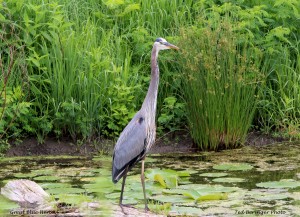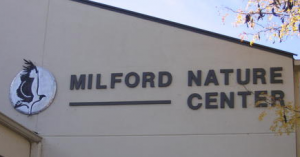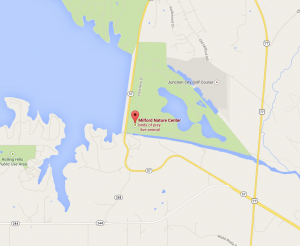
Great Blue Heron by Ted Beringer
Great Blue Heron (Ardea herodias) Photo Credit: Ted Beringer
The Great Blue heron has a white face sporting a black eyebrow that extends back to two black plumes extending from the rear of its head.
The neck has black and white streaking down the front but is otherwise reddish gray. Mature or breeding birds have a dramatic plumage variety. The feathers on the lower part of the front neck form a long plume like a vest; it also has plumes on the lower back at the start of the breeding season. Immature birds have dull color, and lack plumes. The bill is dull yellowish, becoming orange briefly at the start of the breeding season, The lower gray legs become more orange during the breeding season. Whether hunting or resting on one leg, the Great Blue heron is a stately bird. When hunting it may stand motionless in shallow water, scanning for small fish. They also stalk with a precise, deliberate stride as they search for prey. This belies their agile ability to act rapidly with a thrust of their beak into the water, sometimes launching their entire body briefly into the air to follow prey with elaborate wing motions.
Diet: The primary food for the great blue heron is small fish, though it opportunistically consumes shrimp, crabs, aquatic insects, other small mammals, amphibians, reptiles, even turtles.
Its call is a surprising hoarse squawk that is often issued when disturbed while hunting. As it flies away appreciate the elegant six foot wingspan, its effortless, long slow wing beats, its long legs trailing behind. As it flies away, notice its head positioned to keep an eye on you.
The great blue heron adapts to a wide variety of wetlands, both fresh water and saltwater, marshes or swamps. They usually nest in trees near the water habitat where they feed. They are communal nesters that may establish a rookery of several nests with other herons to more than a hundred nests. Their nests, sometime 4 feet wide, are built of sticks. They abandon their eggs and chicks if nearby human activity becomes disruptive. Predators of eggs and nestlings include turkey vultures, ravens and crows, red-tailed hawks, black bears and raccoons. Great Blue herons will winter in the US east of the Rockies wherever there is unfrozen water with fish. Some migrate into Mexico and Central America in the winter. However in summer, it may migrate further north into Canada.



